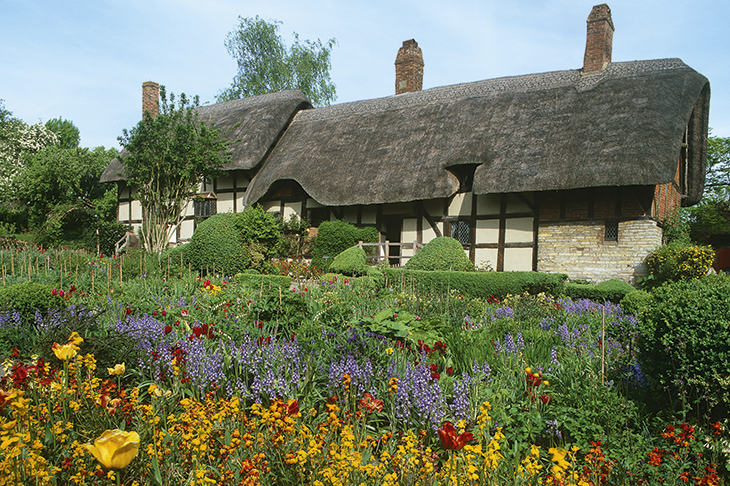The confusion is understandable. You arrive at Anne Hathaway’s Cottage in Stratford-upon-Avon, keen to experience the quintessential cottage garden — only to be told that Shakespeare’s garden was, in fact, designed in the 1920s.
The space in front of an Elizabethan cottage would have been used for keeping pigs or hens, with a patch for cabbages or onions. Any flowers or herbs would have had medicinal or practical uses, not least for strewing on the cottage floor to disguise the stench. By the 19th century, the garden at Hathaway’s Cottage had become more decorative, but it was the Edwardian plantswoman Ellen Willmott who filled the front with flowers and introduced the idea of mown paths through long grass in the orchard.
The same sort of teasing historical layering goes on at the thatched cottage in Dorset where Thomas Hardy was born in 1840. The garden he first knew was an unglamorous working garden for fruit and vegetables, but having built himself a comfortable brick pile (Max Gate) nearby, Hardy returned to transform the exterior of his old cottage with abundant colorful planting.
Perhaps Hardy was not embarrassed by his humble beginnings but simply following fashion. The dream of a simple country house and garden, a place of sweetness and innocence, had been brewing for a while — and encouraged a little fakery. At Versailles, Marie-Antoinette had built her fantasy hamlet in 1783, and around the same time, architects such as William Kent were producing estate cottages and pavilions for wealthy clients, elevating rustic architecture to a new level. In Devon, the Duke of Bedford’s ‘cottage orné’ at Endsleigh is basically a large country house made to look like a small village (it’s now run by Olga Polizzi as a hotel).
What was going on in cottage gardens in the 19th and early 20th centuries was both practical and inspiring. The challenge was to make the most out of not much space, not much money and not much time. Plants needed to be tough and easy to propagate, and self-seeding was encouraged. Indeed the spirit of a cottage garden — think towering hollyhocks, paths over-spilling with lavender and a laden apple tree — is that nothing need match or be formally arranged. The only agenda is to fill your space with scent and color.
The best stories of a cottage garden come from the plants themselves. A myrtle shrub grown from a sprig from a grandmother’s wedding bouquet, the rosemary bush bulging against the fence: a place to dry linen and a source of tiny bunches to place in coffins for remembrance. The very names of plants sing of the real experience of growing and living with them: wallflowers for example, because they seed themselves on a sunny wall. There are dozens of seductively named possibilities: ‘Granny’s Bonnet’ (Aquilegia), ‘Bleeding Hearts’ (Lamprocapnos spectabilis), and perhaps the ultimate: ‘kiss-me-over-the-garden-gate’ (Persicaria orientalis), a show-stopping five-footer.
The logical spirit of the real cottage garden feels very 2019: no lawn, wildlife–friendly plants, inventive recycling. As Margery Fish, 1950s champion of the cottage garden, wrote of the primrose: ‘With plentiful libations of washing up water and mulching of tea leaves… it cannot help but enjoy itself.’
This article was originally published in The Spectator magazine.


















